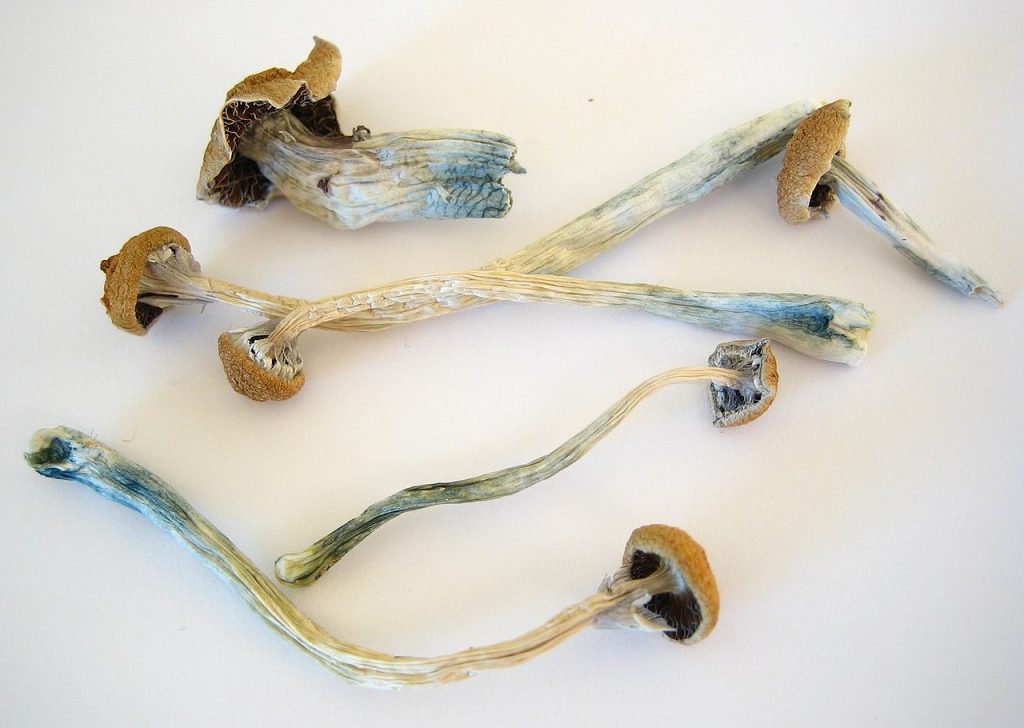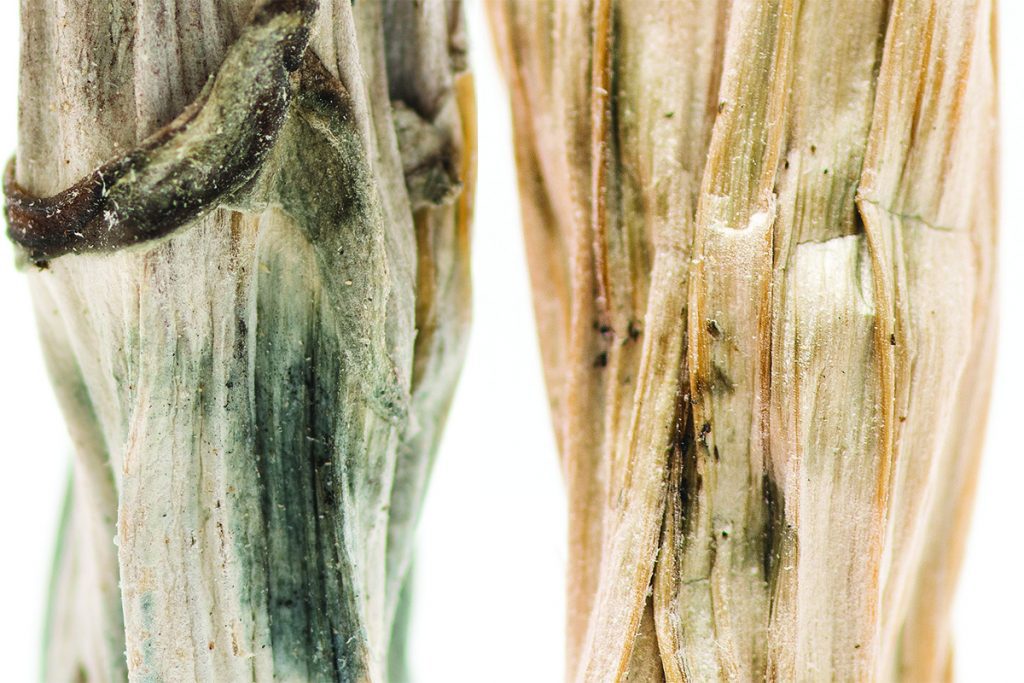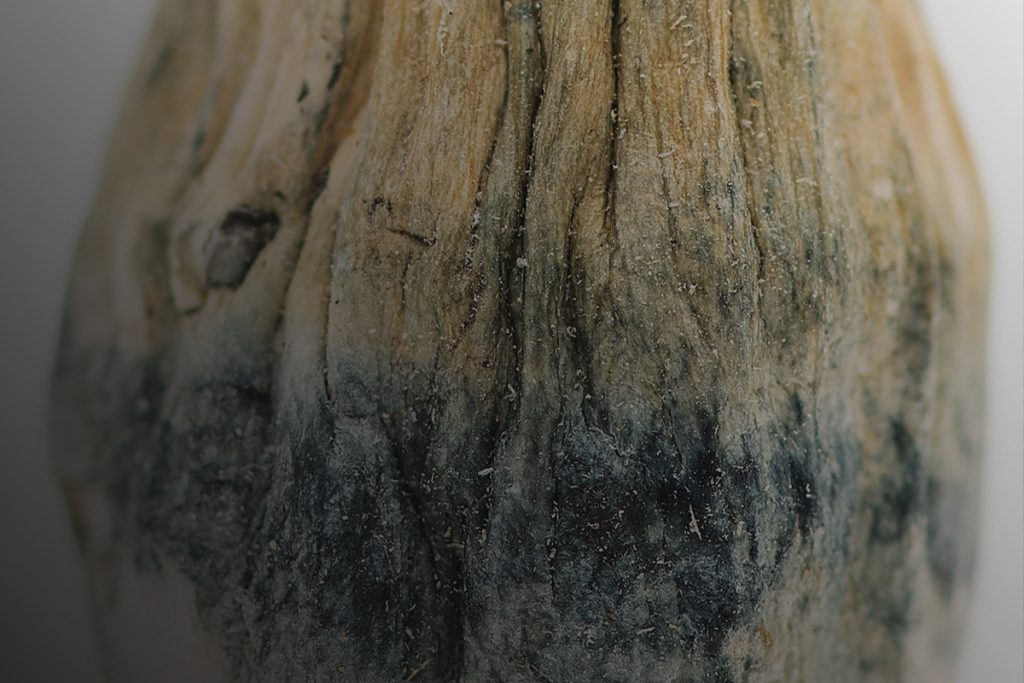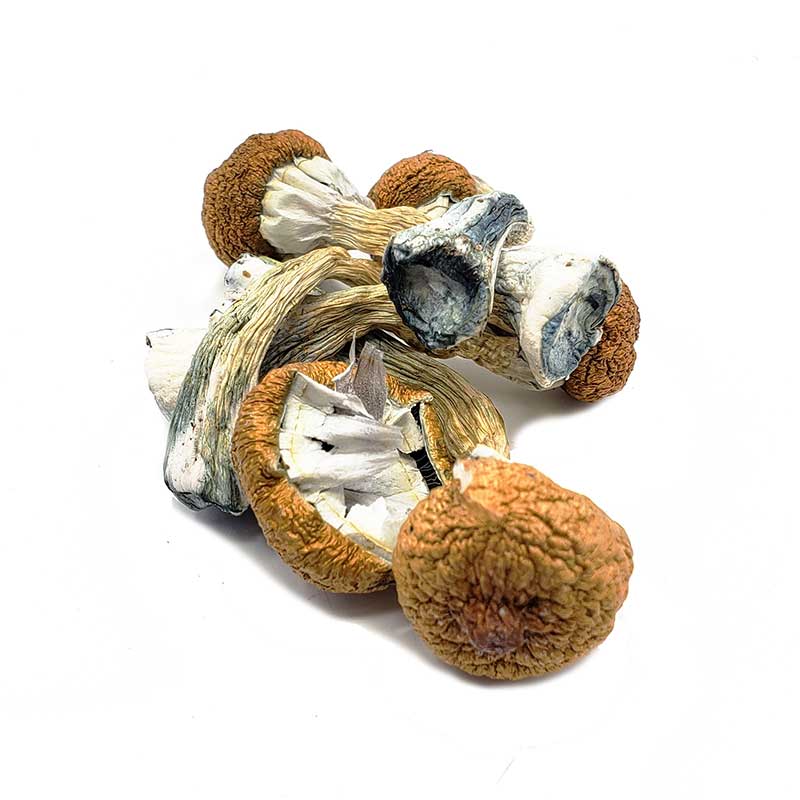
The blue spots on the shrooms occur through a process knowing as bruising or bluing. It is very common on the outside of mushrooms that contain psilocybin and is often discussed by plant experts. However, the cause is disputed. Most believe that the blue colour appears when the psilocin substance within the mushroom (this causes psychedelic effects) begins to degrade within the cells of the mushroom after it is exposed to oxygen having been broken away from the root. As the cells begin to degrade, they turn a darker blue colour, causing the spotting on the surface.
The blue spotting on shrooms therefore, gives us a great indicator that psilocin was present at one stage in the mushroom, even if it has now fully degraded. It is also believed that the mushrooms that are most potent and have a stronger effect are likely to develop bruising more easily and therefore may have more bruising than their less potent counterparts.

The bluing of mushrooms (one of its most famous characteristics) confirms that the active compound is or at least was there at one time. While bruises may lower the potency of psilo mushrooms in some cases, they can also signify the production of the psychedelic effects.
Do all Psilocybin Mushrooms bruise?
Though some strains are prone to bruising, others never bruise at all. It is also established that a handful of psychoactive strains don’t bruise. The colors of those bruises will differ from the non-psychoactive ones, which are likely produced by a different reaction and different compounds than those found in psilocybin mushrooms.
Not all magic mushrooms bruise blue. You may be surprised to find out that not all psychedelic mushrooms produce psilocin or psilocybin. The psychoactive properties of Amanita muscaria, for example, are caused by the chemicals ibotenic acid and muscimol, not psilocin. This mushroom species, and related species in the Amanita family, do not bruise blue.
Similarly, the bruising reaction varies in different psilocybin-containing species. Sometimes, a mushroom will bruise just a faint blue, while other times, the bruising will appear very dark and hard to miss.The more bruising, the more psilocin is converted into other inactive compounds. For this reason, it’s always recommended to handle and harvest these mushrooms with great care.

Which Mushrooms Bruise Blue?
Psilocybe genus
The most famous blue bruising mushrooms belong to the Psilocybe genus, which includes the legendary Psilocybe cubensis. These mushrooms are perhaps the easiest for citizen mycologists to recognize. Although, cubensis certainly isn’t the only blue-bruising Psilocybe around. Here are three of the most popular psilocybes:
- Psilocybe cubensis (Gold Cap)
- Psilocybe semilanceata (Liberty Cap)
- Psilocybe cyanescens (Wavy Cap)

Panaeolus genus
It’s a fact: Many psilocybin-containing species grow in dung. Members of the Panaeolus genus are prime culprits. These humble brown mushrooms may not look like much, but the genus produces several potent psychoactive species. Although, they certainly aren’t as popular or well-known as the psilocybes. One of the most common blue-bruising Panaeolus mushrooms is Panaeolus cyanescens, more popularly known as the “Blue Meanie.”



